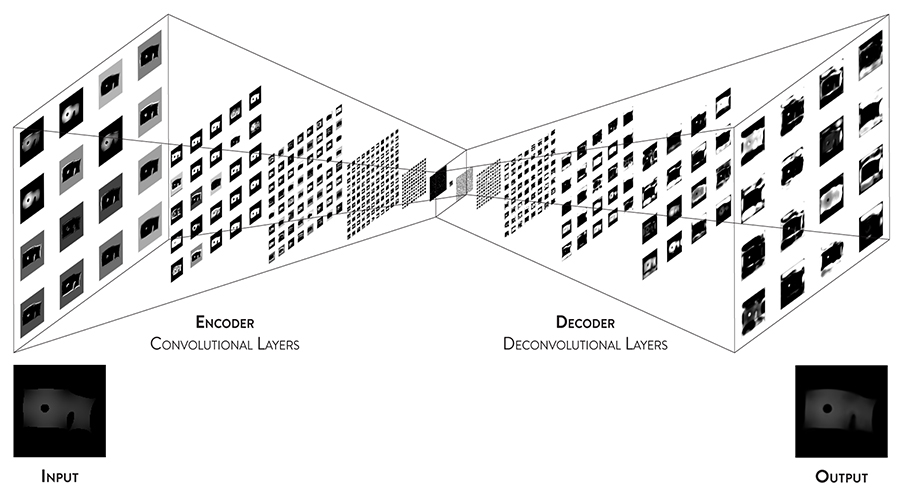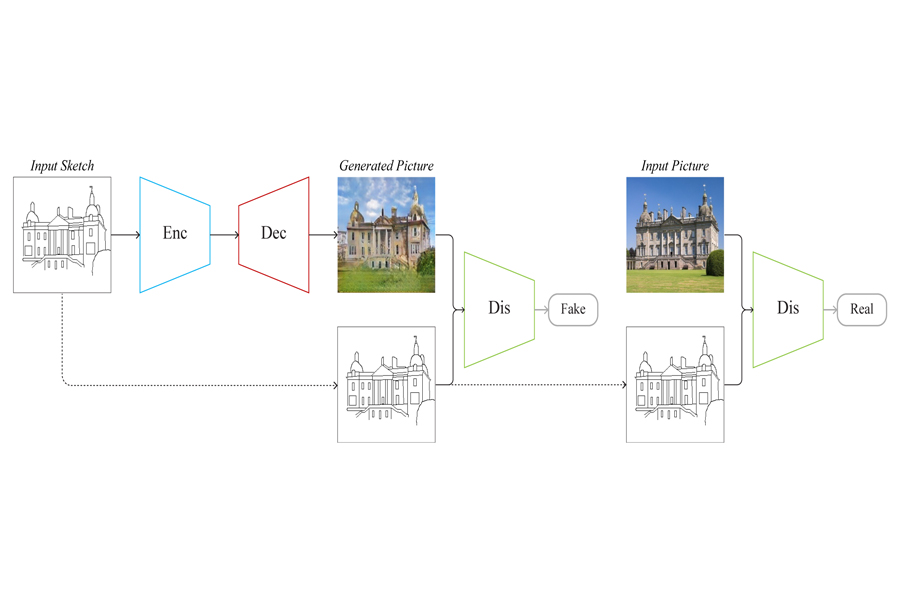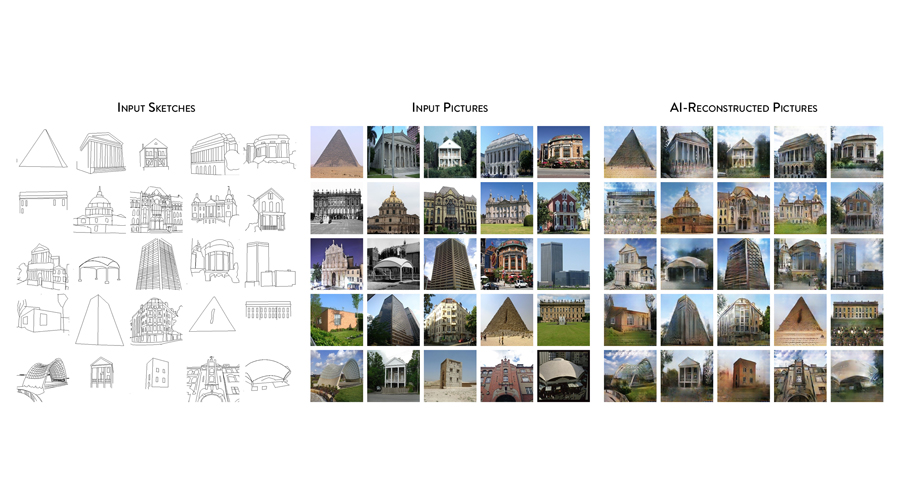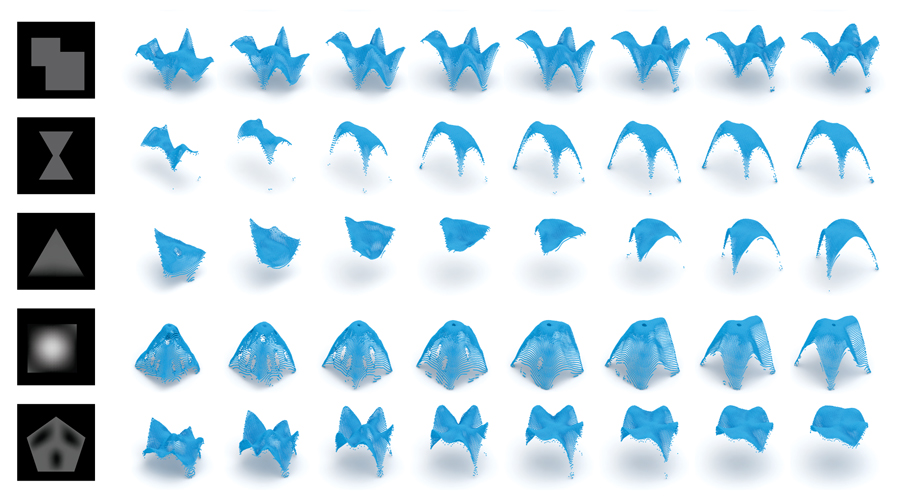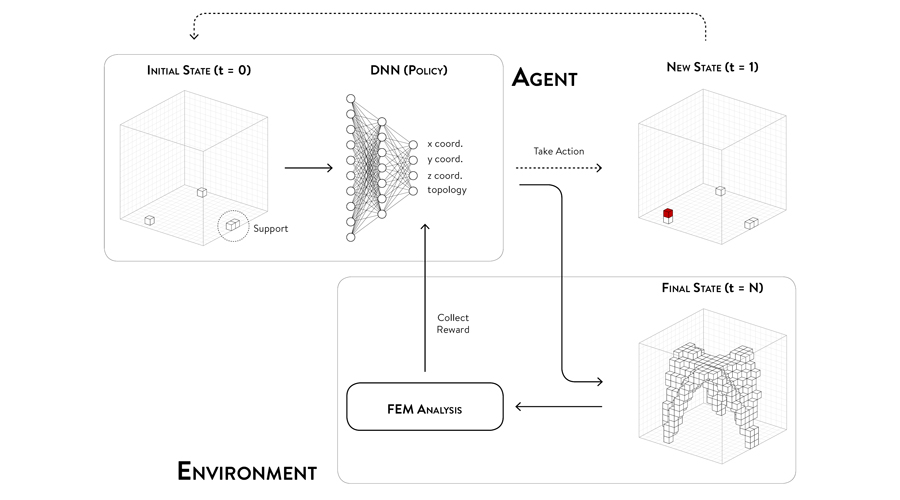Since the birth of computer science, computational tools have been developed to automate such design tasks as drafting, analysis and optimisation. In terms of human-machine interaction, these tools passively respond to the instructions provided by the designer. The commands of the tool are known, and therefore the output is largely predictable. For this reason, computational tools have a limited capacity to inform conceptual design and idea generation.
Recently, a new form of computation based on AI has been proposed. AI models can learn instructions independently and only require input in the form of a dataset and a learning objective. The functioning of these models is mostly hidden, and therefore the output of human-machine interaction is less predictable.
This PhD leverages this feature to develop computational tools that can autonomously learn design strategies and interact with the designer to suggest design options that are unbiased by formal descriptions of the design problem (or set of instructions).
The aims of this PhD are (1) implementing different strategies to train AI models in architectural and structural design, and (2) develop AI-based computational tools that allow new forms of human-machine interaction in Computer-Aided Design.
Learning how to design is a daunting task for humans, let alone for machines. Designing involves the mastery of technical skills and the proficient use of imagination and creativity, which requires the designer to make good use of both specialist and general knowledge.
This research assumes that the acquisition of such knowledge is due to three fundamental cognitive mechanisms: expertise, playfulness and analogical reasoning. Training AI in design should therefore attempt to simulate these mechanisms.
The results of the PhD are a set of design tools that illustrate how the simulation of each mechanism can be used to train AI models in design, and how the AI model can interact with humans to support conceptual design and idea generation.
